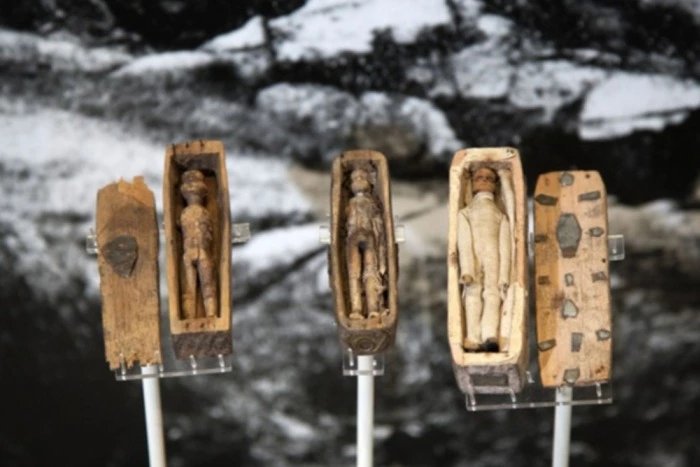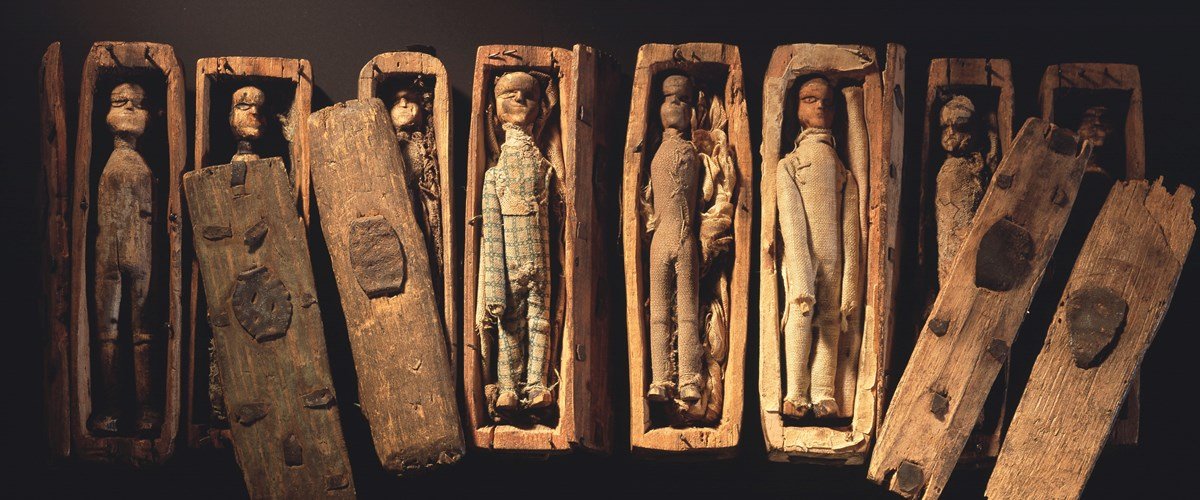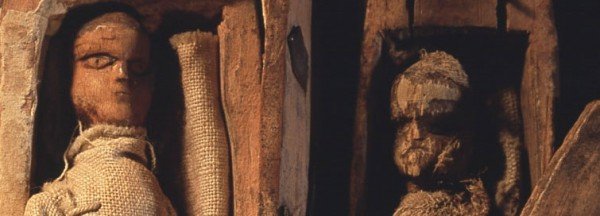17 Mysterious Miniature Coffins In Scotland Remain An Unsolved Enigma
Ellen Lloyd - AncientPages.com - Almost 200 years ago, seventeen concealed miniature coffins were discovered in a cave in Edinburgh's Arthur's Seat, Scotland. It's a curious find that, to this day, remains an unsolved enigma. No one knows who put the tiny coffins there and why.
The Discovery Of The Miniature Coffins In Edinburgh's Arthur's Seat
It all started in June 1836, when three Scottish boys hunting rabbits discovered a small cave in the rock, hidden behind three-pointed slabs of slate. Concealed within were 17 miniature coffins.
According to Charles Fort (1874-1932), an American writer and researcher specializing in anomalous phenomena the coffins were only "three or four inches long.
In the coffins were miniature wooden figures. They were dressed differently in both style and material. There were two tiers of eight coffins, and a third one started with one coffin.
Three miniature coffins are on display in the National Museum of Scotland. Image credit: The National Museum of Scotland
The coffins had been deposited singly, in the little cave, and at intervals of many years. In the first tier, the coffins were quite decayed, and the wrappings had moldered away. In the second tier, the effects of age had not advanced so far. And the top coffin was relatively recent looking."
On July 16, 1836, the Scotsman reported that several figures were either badly damaged or lost altogether as the decrepit-looking cache provided convenient fodder for the boys to pelt one another with. Fortunately, some of the coffins were still intact, and they were sold to Robert Frazier, a South Andrews Street jeweler and private collector, where they remained until being donated to the National Museum of Scotland in 1901. Only eight figures, in varying states of decay, survive.
In Whose Image Were The Carved Figures Made?
The human effigies were all dressed in different garments. They must have been created to represent other individuals.
According to the Scotsman, the figures "were dressed from head to foot in cotton clothes, and decently laid out with a mimic representation of all the funereal trappings which usually form the last habiliments of the dead."
Ever since the coffins were discovered, experts and non-specialists alike have put forward several interesting and sometimes even incredible theories that attempt to explain who placed the artifacts in the cave and why.
Scotland has long been where many people were, and some still are superstitious.
The miniature coffins are still an unsolved mystery. Image credit The National Museum of Scotland
Satanic spell-manufactory!' cried The Scotsman, the first paper to report the tale, in an article published on July 16, 1836:
"Our own opinion would be – had we not some years ago abjured witchcraft and demonology – that there are still some of the weird sisters hovering about Mushat's Cairn [sic] or the Windy Gowl, who retain their ancient power to work the spells of death by entombing the likenesses of those they wish to destroy.
Later different theories were presented. Some attempted to explain the existence of the coffins as a result of witchcraft while others suggested that sailors perhaps kept them to ward off death.
Another widely held belief is that each of the figures was designed to commemorate the victims of the infamous serial killers Burke and Hare. The murderous duo had ended the lives of seventeen Edinburgh citizens less than a decade before the boys' discovery on Arthur's Seat.
According to the National Museum of Scotland, "the figures all appear to be made by the same hand, although it's possible the coffins were crafted by two different people.
A close-up of two of Edinburgh's mysterious miniature dolls. Are these intended to be the faces of two victims of the notorious bodysnatchers Burke and Hare? Credit: National Museum of Scotland.
Some of the materials and tools used – wood, iron embellishments, nails, a sharp, hooked knife – indicate the coffins could have been fashioned by a shoemaker.
The figures seem to form a set, and their upright bearing, flat feet, and swinging arms suggest they may have been toy soldiers. Their eyes are open, making it unlikely they were originally designed as corpses.
Some of the figures are missing their arms – perhaps removed so that they would fit in the coffins.
The fabric the little bodies are dressed in dates from the early 1830s, so they hadn't lain buried for more than six years."
Today, the remaining eight coffins and their contents are on display at the National Museum of Scotland on Chambers Street.
Written by Ellen Lloyd – AncientPages.com
Updated on November 4, 2022
Copyright © AncientPages.com & Ellen Lloyd All rights reserved. This material may not be published, broadcast, rewritten or redistributed in whole or part without the express written permission of AncientPages.com and Ellen Lloyd
Expand for referencesMore From Ancient Pages
-
 LIDAR Discovers Circular Iron Age Village At Cap d’Erquy, France
Archaeology | Apr 4, 2024
LIDAR Discovers Circular Iron Age Village At Cap d’Erquy, France
Archaeology | Apr 4, 2024 -
 Seven Fires Prophecy Of The Anishinaabe People And The Future Of The Turtle Island – Are Humans Standing At The Crossroads?
Myths & Legends | Feb 14, 2019
Seven Fires Prophecy Of The Anishinaabe People And The Future Of The Turtle Island – Are Humans Standing At The Crossroads?
Myths & Legends | Feb 14, 2019 -
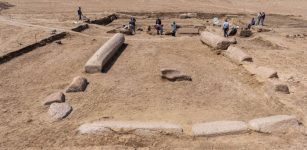 Ancient Temple Dedicated To God Zeus Discovered In Sinai, Egypt
Archaeology | Apr 26, 2022
Ancient Temple Dedicated To God Zeus Discovered In Sinai, Egypt
Archaeology | Apr 26, 2022 -
 What Happened To The Homo Sapiens In The Thar Desert When They Encountered The Indian Monsoon System
Archaeology | Oct 5, 2021
What Happened To The Homo Sapiens In The Thar Desert When They Encountered The Indian Monsoon System
Archaeology | Oct 5, 2021 -
 Champa’s Megalithic City My Son And The Nagas Inscription That Could Re-Write History
Ancient Mysteries | Jan 27, 2018
Champa’s Megalithic City My Son And The Nagas Inscription That Could Re-Write History
Ancient Mysteries | Jan 27, 2018 -
 Secrets Of Mysterious Bronze Age Hoard Found In Rosemarkie, Scotland Revealed
Archaeology | Jul 31, 2024
Secrets Of Mysterious Bronze Age Hoard Found In Rosemarkie, Scotland Revealed
Archaeology | Jul 31, 2024 -
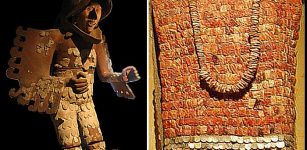 Fearsome Aztec Eagle And Jaguar Warriors Of Mesoamerica
Featured Stories | Sep 14, 2023
Fearsome Aztec Eagle And Jaguar Warriors Of Mesoamerica
Featured Stories | Sep 14, 2023 -
 Zapotecs’ Magnificent City Of Mitla Was Destroyed By A Seismic Landslide
Archaeology | Aug 23, 2024
Zapotecs’ Magnificent City Of Mitla Was Destroyed By A Seismic Landslide
Archaeology | Aug 23, 2024 -
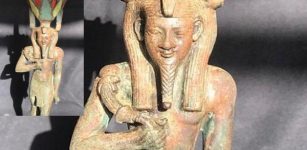 Carved Statue Of God Nefertum Unearthed In Egypt’s Saqqara Necropolis
Archaeology | Oct 3, 2020
Carved Statue Of God Nefertum Unearthed In Egypt’s Saqqara Necropolis
Archaeology | Oct 3, 2020 -
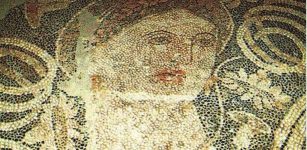 Wax Tablets Reveal Ancient Secrets of The Illyrians
Artifacts | Sep 5, 2015
Wax Tablets Reveal Ancient Secrets of The Illyrians
Artifacts | Sep 5, 2015 -
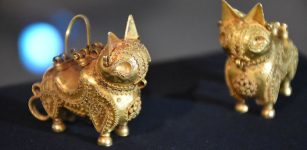 Beautiful Gold ‘Lynx’ Earrings Discovered In The Ruins Of The Ancient Lost City Of Ani Go On Display In 2023
Archaeology | Dec 29, 2022
Beautiful Gold ‘Lynx’ Earrings Discovered In The Ruins Of The Ancient Lost City Of Ani Go On Display In 2023
Archaeology | Dec 29, 2022 -
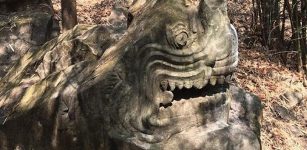 Ancient Statue Of Makara, Legendary Sea-Creature Found In Cambodia
Archaeology | Jan 29, 2020
Ancient Statue Of Makara, Legendary Sea-Creature Found In Cambodia
Archaeology | Jan 29, 2020 -
 Negev Desert’s Ancient Site Tells Story About Humans, Neanderthals Coexistence
Archaeology | Jun 19, 2021
Negev Desert’s Ancient Site Tells Story About Humans, Neanderthals Coexistence
Archaeology | Jun 19, 2021 -
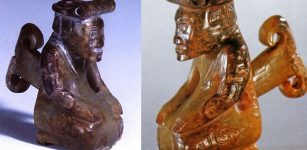 Peculiar Artifact Discovered In Tomb Of The Warrior Queen Fu Hao
Artifacts | Oct 26, 2018
Peculiar Artifact Discovered In Tomb Of The Warrior Queen Fu Hao
Artifacts | Oct 26, 2018 -
 The Carthaginians’ Secret: Mysterious Desert Land Or America Found By Mistake?
Ancient Mysteries | Jul 27, 2017
The Carthaginians’ Secret: Mysterious Desert Land Or America Found By Mistake?
Ancient Mysteries | Jul 27, 2017 -
 3,400-Year-Old Cuneiform Tablet Excavated In Old City Of Alalah
Archaeology | Aug 23, 2020
3,400-Year-Old Cuneiform Tablet Excavated In Old City Of Alalah
Archaeology | Aug 23, 2020 -
 Atomic Theory Was Invented 2,600 Years Ago By Acharya Kanad – A Genius Ahead Of His Time
Featured Stories | May 15, 2014
Atomic Theory Was Invented 2,600 Years Ago By Acharya Kanad – A Genius Ahead Of His Time
Featured Stories | May 15, 2014 -
 Ancient DNA Extracted From A 2,900-Year-Old Clay Brick – Unique Time Capsule Of Plant Life
DNA | Aug 23, 2023
Ancient DNA Extracted From A 2,900-Year-Old Clay Brick – Unique Time Capsule Of Plant Life
DNA | Aug 23, 2023 -
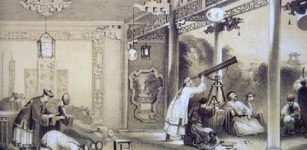 On This Day In History: Sunspot Observed By Chinese Astronomers During The Han Dynasty – On May 10, 28 BC
News | May 10, 2016
On This Day In History: Sunspot Observed By Chinese Astronomers During The Han Dynasty – On May 10, 28 BC
News | May 10, 2016 -
 Beowulf Is Much Older Than Previously Thought And Not An English Poem – Professor Says
Linguistic Discoveries | Jan 6, 2020
Beowulf Is Much Older Than Previously Thought And Not An English Poem – Professor Says
Linguistic Discoveries | Jan 6, 2020

